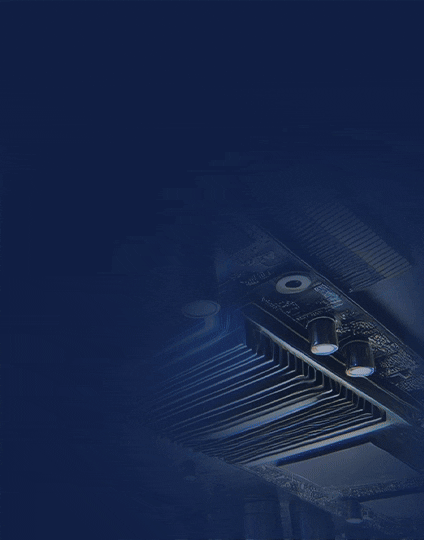Field-Programmable Gate Arrays (FPGAs) are versatile and powerful devices used across industries such as aerospace, automotive, telecommunications, and healthcare. They offer the flexibility to reconfigure hardware functionality, enabling developers to adapt their designs to evolving requirements. However, with this adaptability comes a critical need for robust security measures.
In today’s interconnected world, FPGAs are increasingly deployed in sensitive applications where security threats, such as unauthorized access, IP theft, and hardware tampering, can have significant consequences. Attackers may exploit vulnerabilities in FPGA designs to compromise data integrity, steal intellectual property, or even disrupt critical operations.
This growing landscape of risks emphasizes the importance of implementing effective security measures in FPGA design. From protecting bitstreams to deploying advanced cryptographic techniques, securing FPGA-based systems requires a holistic approach that addresses challenges at every stage—from design and development to deployment and operation.
This guide explores the key challenges, built-in security features, best practices, and emerging trends in FPGA security, helping developers build safer and more reliable systems.

Security Challenges in FPGA Design
FPGAs, while versatile and powerful, are not immune to security vulnerabilities. Here are some of the key challenges faced when designing secure FPGA-based systems:
1. Unauthorized Access
- Attackers can exploit vulnerabilities to gain unauthorized access to FPGA devices or design files.
- This can lead to system manipulation, data breaches, or unauthorized modifications.
2. IP Theft and Cloning
- Intellectual Property (IP) cores are critical assets in FPGA designs.
- Unprotected IPs are at risk of being copied, reverse-engineered, or cloned, leading to significant financial and reputational damage.
3. Hardware Trojans
- Malicious modifications, known as hardware Trojans, can be introduced during the design or manufacturing process.
- These Trojans may remain dormant until triggered, causing unexpected behavior or compromising the system.
4. Side-Channel Attacks
- Attackers can exploit side-channel information, such as power consumption or electromagnetic emissions, to extract sensitive data like cryptographic keys.
- These attacks do not require direct access to the FPGA but can still compromise its security.
5. Reverse Engineering
- Adversaries can analyze the bitstream or hardware configuration to reverse-engineer the design.
- This not only exposes sensitive details but can also enable cloning or tampering.
6. Configuration Attacks
- FPGAs rely on configuration bitstreams to define their functionality.
- If these bitstreams are intercepted or modified, attackers can load malicious configurations or disrupt normal operations.
7. Supply Chain Vulnerabilities
- The global supply chain for FPGA devices and IPs can introduce risks.
- Untrusted sources or compromised components can lead to the inclusion of backdoors or other security issues.
Built-in Security Features in FPGA Design
Modern FPGA devices come equipped with a range of built-in security features designed to protect against threats and ensure the integrity of the system. Here are some of the key features commonly provided by FPGA vendors:

1. Bitstream Encryption
- Protects the configuration file (bitstream) from being intercepted and analyzed.
- Ensures only authorized and unaltered bitstreams are loaded onto the FPGA.
- Common encryption standards used include AES (Advanced Encryption Standard).
2. Secure Boot
- Verifies the integrity and authenticity of the FPGA configuration during the boot process.
- Prevents unauthorized or tampered configurations from being loaded.
- Implements cryptographic checks to ensure a trusted startup sequence.
3. Physical Unclonable Functions (PUFs)
- Leverages inherent variations in the FPGA’s physical structure to generate a unique, device-specific fingerprint.
- Used for secure key storage and device authentication.
- Eliminates the need to store cryptographic keys in external memory.
4. Authentication Mechanisms
- Ensures that only authorized users or systems can access the FPGA’s design tools and configuration files.
- Includes password protection, digital signatures, and multi-factor authentication.
5. Anti-Tamper Features
- Detects and responds to unauthorized physical or logical access attempts.
- May include active shielding, intrusion detection, or self-destructive measures to protect sensitive data.
6. Access Control
- Allows designers to restrict access to specific parts of the FPGA design.
- Prevents unauthorized users or processes from modifying critical regions or IP blocks.
7. Debugging and JTAG Security
- Protects the JTAG (Joint Test Action Group) interface from unauthorized access.
- Includes options to disable or secure the JTAG interface after deployment.
8. Secure Firmware Updates
- Ensures that firmware updates to FPGA-based systems are authenticated and encrypted.
- Protects against malicious or unauthorized updates.
9. Vendor-Specific Solutions
- Leading FPGA vendors like Xilinx, Intel, and Lattice provide proprietary security tools and features tailored to their devices.
- Examples include Xilinx’s Secure Boot and Intel’s Stratix 10 cryptographic security features.
Conclusion
Securing FPGA designs is not just an option but a necessity in today’s increasingly interconnected and high-stakes technology landscape. From unauthorized access to IP theft and reverse engineering, the challenges are diverse and constantly evolving. However, by leveraging built-in security features like bitstream encryption, secure boot, and physical unclonable functions, alongside advanced techniques such as cryptographic implementations, design obfuscation, and real-time monitoring, developers can safeguard their FPGA-based systems effectively.
A proactive approach to security not only protects intellectual property and sensitive data but also ensures the reliability and trustworthiness of systems in critical industries like aerospace, automotive, healthcare, and telecommunications. As threats become more sophisticated, continuous innovation in security practices—such as adopting AI-driven anomaly detection and preparing for quantum threats—will be essential.
Ultimately, integrating robust security measures throughout the design, deployment, and maintenance lifecycle of FPGA systems is key to staying ahead of potential risks and building a future-ready technological foundation.


![What is FPGA Introduction to FPGA Basics [2023] computer-chip-dark-background-with-word-intel-it](https://fpgainsights.com/wp-content/uploads/2023/06/computer-chip-dark-background-with-word-intel-it-300x171.jpg)









